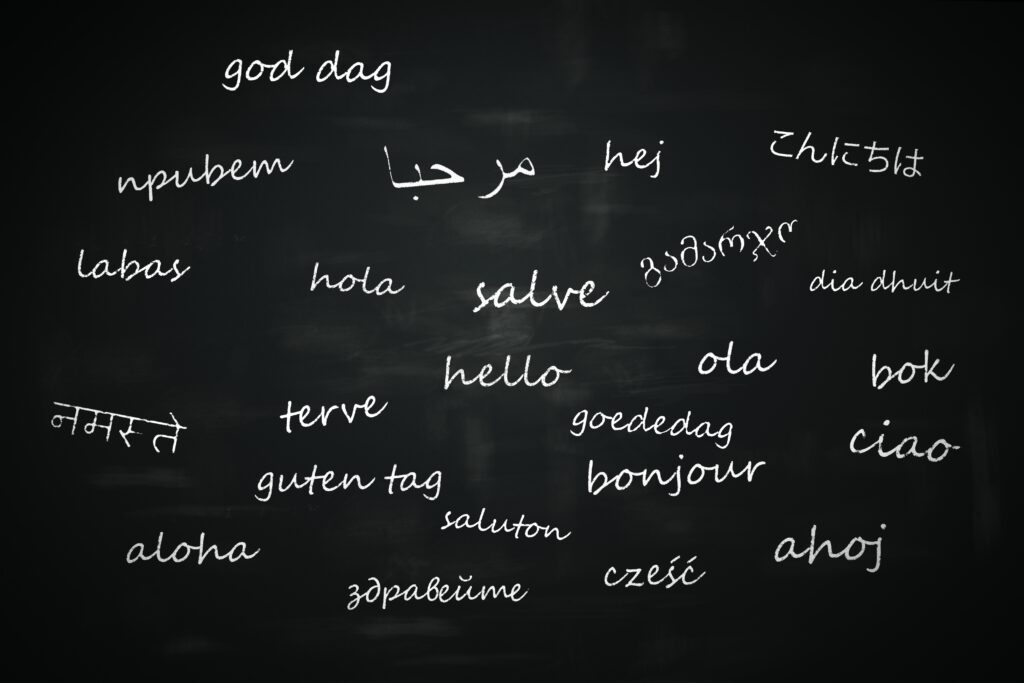For some brands, trademarking foreign words or phrases might hit just the right note in terms of image. The word “bakery” might make consumers in Seattle think of their local Safeway, while boulangerie evokes flaky, buttery croissants in Paris. Yet the use of foreign words raises certain issues when it comes to registering trademarks in the United States.
The Doctrine of Foreign Equivalence
When trademarking foreign words, brands must keep in mind the United States Patent and Trademark Officer’s (USPTO) doctrine of foreign equivalents. According to this doctrine, “a foreign word (from a language familiar to an appreciable segment of American consumers) and the English equivalent may be held to be confusingly similar.” Likelihood of confusion is grounds for refusal of a trademark registration application, under Section 2(d) of the Trademark Act of 1946. 15 U.S.C. § 1052(d).
A real-life example that USPTO likes to provide involves the marks WOLF and LUPO, with the latter being the Italian word for “wolf.” As far as USPTO is concerned, those two marks are confusingly similar, if they describe related goods. Presumably, the marks AZUL and BLUE would be also be confusingly similar, as would SAKURA and CHERRY BLOSSOM.
Note the qualification that the foreign word must be “from a language familiar to an appreciable segment of American consumers.” However, in practice USPTO’s threshold has not been very high. In 2006, the Trademark Trial and Appeal Board (TTAB) relied on Census evidence showing that 0.6% of the American population speaks French “very well” or “well” to hold that French is a “commonly spoken language” in the United States. The same year, the TTAB found that 706,000 Russian-speakers constituted a “significant portion of consumers” in the United States.
Fancy Foreign Words Won’t Make Your Mark Fanciful
When trademarking foreign words, similarity to English trademarks that have the same meaning is just one potential issue. While a foreign word may have an exotic ring to most American consumers, USPTO may consider it to be a generic description of the goods and services in question. The Trademark Act prohibits the registration of marks that are “merely descriptive.” 15 U.S.C. § 1052(e)
An example of a descriptive mark is COFFEEHOUSE, if it is used to identify establishments that sell coffee. On the other hand, if the mark is used to identify gardening services or batteries, its registration should face no problems on descriptiveness grounds. Building on the example above, the mark CAFÉ is merely descriptive of coffeeshops (or coffee itself for that matter).
By the way, in case you’re wondering, the character “É” is acceptable on a U.S. trademark application.
What About Trademarking Chinese Words?
To be fair, words like “café” and “boulangerie” are widely used in the United States, and are arguably not foreign words. Stated differently, these are easy catches for USPTO. But what about trademarking Chinese words?
USPTO has refused applications to register marks in transliterated Chinese relying on the doctrine of foreign equivalents. For example, the USPTO cited the mark HELLO! as part of its basis for refusing an application to register NIHAO.
Again, this is an easy catch. Nihao is a relatively well known term in the United States. There is no shortage of Chinese establishments using it as part of their names. Moreover, China Southern Airlines, which flies to the United States, uses it as the name of its inflight magazine. But what if the pinyin term is not as well known? Or what if the trademark includes actual Chinese characters? Is USPTO really going to translate them?
Translation of Foreign Words
When examining an application to trademark a foreign word, USPTO does not need to translate it, as that is something the applicant must do. According to federal regulations, trademark applications must include English translation of any non-English wording. 37 CFR § 2.32(a)(9). In the case of non-Latin characters, both a transliteration and a transliteration must be provided. 37 CFR § 2.32(a)(10).
One example of a mark that illustrates both of these requirements was registered by Din Tai Fung in 2021. The mark includes both the restaurant’s name in Chinese characters and their transliteration. According to the registration,
The English translation of ‘DIN TAI FUNG’ in the mark is ‘tripod is calm and rich.’
The non-Latin characters in the mark transliterate to DIN TAI FUNG and this means tripod is calm and rich in English.
Playing Games with USPTO Is Not Advised
Not surprisingly, applicants sometimes try to pull a fast one on USPTO when trademarking foreign words, claiming a particular word has no meaning in a foreign language, or translating it in a way designed to facilitate the registration. However, as we’ve pointed out, federal officials can and do rely on the internet when they’re doing their job. So if you want to argue that your SHOUJI mark really means “severed head,” and not “cellphone,” be our guest … but don’t be surprised if USPTO calls you out.

























